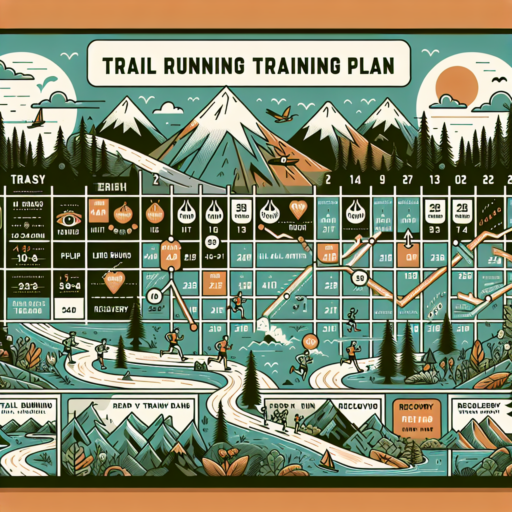No se han encontrado productos.
How to train for a 25km trail run?
Training for a 25km trail run is an exciting endeavor, but it requires a structured and disciplined approach to ensure success and avoid injuries. The rugged terrain, elevation changes, and uneven surfaces of trail runs demand specialized training strategies beyond those of standard road races.
Develop a Strong Base
Before diving into trail-specific workouts, it’s essential to build a strong running base. Aim for consistent, moderate runs three to four times a week, gradually increasing your total weekly mileage by no more than 10%. This steady build-up enhances your endurance and prepares your body for the more intense trail training to come. Incorporating strength training into your routine is also crucial, with a focus on core, leg, and ankle muscles, which are pivotal for stability on uneven surfaces.
Incorporate Hill Workouts
Hills are a hallmark of trail running and require both physical strength and mental resilience. Start with shorter hill repeats, gradually increasing the length and intensity as your training progresses. These workouts improve your power, running economy, and prepare you for the elevation changes you’ll face on the trail. Mixing in some downhill running is important too, as it teaches you how to descend safely and efficiently, utilizing controlled momentum.
Trail-Specific Sessions
Once you’ve established your base and are comfortable with hills, start integrating trail-specific sessions into your plan. This means running on trails that mimic the conditions of your upcoming race. Focus on navigating technical terrain, such as roots, rocks, and mud, to enhance your agility and balance. It’s also beneficial to practice running at the time of day the race is scheduled, to get accustomed to similar lighting and temperature conditions.
How to prepare for a 25 km run?
Preparing for a 25 km run is an exciting challenge that requires dedication, proper planning, and a structured approach to training. An essential first step is to establish a solid base level of fitness. This doesn’t mean you need to be running long distances from the get-go, but building a routine of regular, shorter runs can help set the stage for more intense training.
Incremental Training is key when ramping up for a 25 km race. A gradual increase in distance prevents overuse injuries and allows your body to adapt to longer distances. Experts often recommend the 10% rule, which suggests not increasing your weekly mileage by more than 10% from week to week. This approach helps in building endurance steadily without overwhelming your body.
Weekly Training Breakdown
Incorporating variety in your training is crucial. A well-rounded plan includes easy runs, long runs, speed work, and rest days. Here’s a basic outline:
- Easy Runs: These should constitute the bulk of your training, helping you build mileage without excessive strain.
- Long Runs: Gradually extend the length of your long run each week. This is where you’ll directly build your endurance for the 25 km distance.
- Speed Work: Intervals or tempo runs improve your cardiovascular system and increase your running economy, making you both faster and more efficient.
- Rest Days: Never underestimate the power of rest. Adequate recovery is vital for muscle repair and preventing burnout.
How to build a trail running training plan?
Building a trail running training plan is an integral step for any runner looking to transition from road running to the challenges presented by trail running. Trail running requires not just endurance, but also agility, strength, and a high level of mental preparation due to the unpredictable nature of the terrains. Therefore, a well-structured training plan is crucial for success and injury prevention on the trails.
Understanding Your Goals and Fitness Level
Before diving into the creation of a training plan, it’s essential to assess your current fitness level and understand your goals. Are you training for a specific trail race, or are you looking to enhance your overall trail running abilities? Identifying your goal and understanding your starting point will help tailor a training program that is both challenging and achievable. Incorporating a mix of long runs, speed work, and strength training sessions adjusted to your current fitness level can lay a solid foundation for your trail running journey.
Incorporating Terrain Specific Training
Trail running encompasses various terrains, from rocky paths to muddy tracks, requiring different skills and preparations. To build an effective trail running training plan, it’s important to include terrain-specific exercises. Training on similar terrains to your target race or trail not only improves your running technique but also conditions your body for the specific challenges of the trail, such as steep ascents and descents. Incorporating hill workouts and technical drills can enhance your agility and strength, making your trail running experience more enjoyable and efficient.
How do I prepare for a 50k trail run?
Preparing for a 50k trail run is an endeavor that requires diligent planning, consistent training, and a strategic approach to nutrition and gear. To embark on this adventure, it’s essential to lay a solid groundwork of endurance and strength training several months in advance. Beginning with a base of regular running, gradually increase your mileage each week, focusing on incorporating longer runs on trails to simulate race conditions.
Strength training is also a critical component of preparation, targeting both the upper body and legs. Incorporating exercises such as squats, lunges, and planks can enhance your core strength and improve your running efficiency. Additionally, it’s vital to include hill repeats and technical terrain in your training to better adapt your body to the challenges of a trail run.
Nutrition plays a pivotal role in your preparation. Emphasizing a diet rich in carbohydrates, proteins, and healthy fats can facilitate energy storage and muscle recovery. Experimenting with different types of foods and hydration strategies during your long runs is crucial to understanding what works best for your body. Remember to focus on hydration, especially during longer training sessions, to maintain optimal performance.




